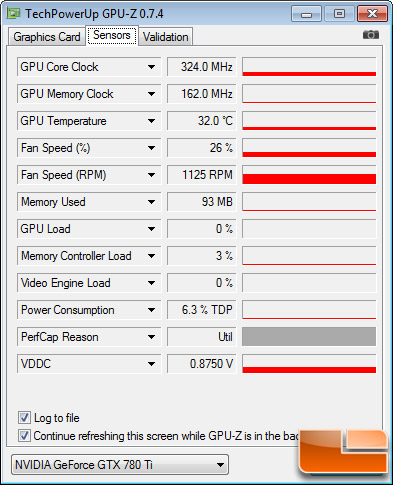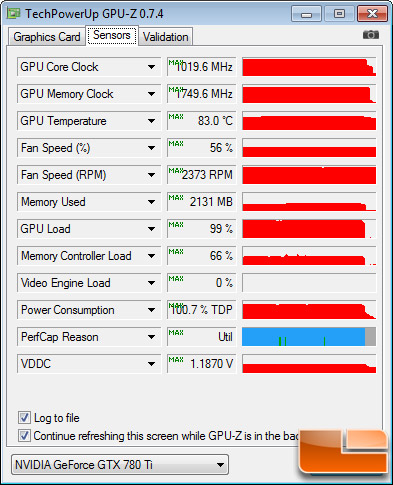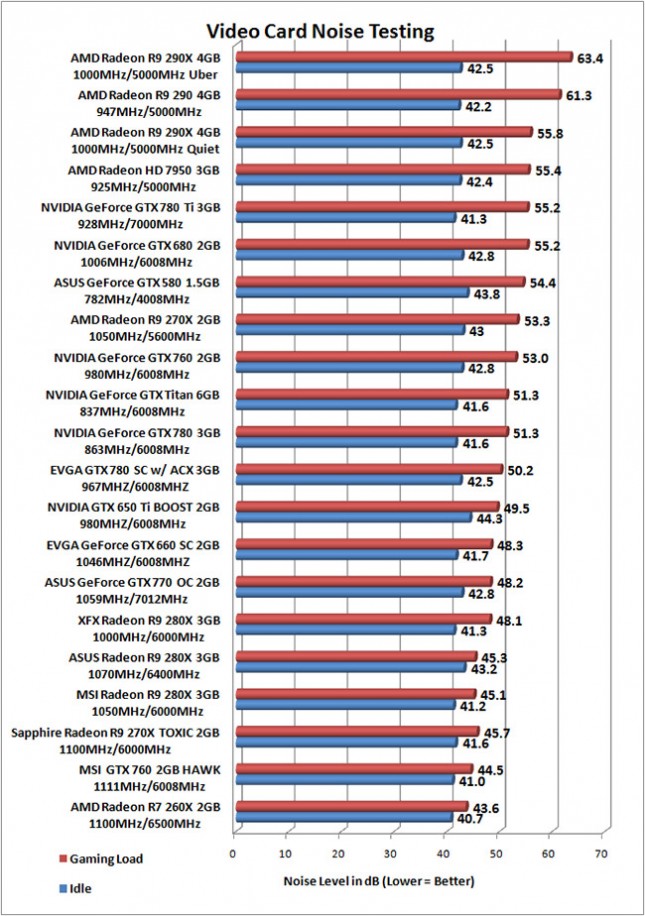NVIDIA GeForce GTX 780 Ti 3GB Video Card Review
Temperature & Noise Testing
Temperatures are important to enthusiasts and gamers, so we took a bit of time and did some temperature testing the NVIDIA GeForce GTX 780 Ti. The AMD Radeon R9 290X and R9 290 both run fairly hot, so it will be interesting to see how this card compares.
NVIDIA GeForce GTX 780 Ti 3GB Idle Temperature

The NVIDIA GeForce GTX 780 Ti was found to idle at 32C with the fan running around 1125-1150 RPM. It should be noted that the ambient room temperature was 22.0C (72F).
NVIDIA GeForce GTX 780 Ti 3GB Gaming Temperature:

The temperature target of the NVIDIA GeForce GTX 780 Ti is 83C by default, so it shouldn’t be a big shock that we were hitting 83C and not going over that temperature. The fan was spinning at 2373RPM or 56% and it wasn’t obnoxious or anything like that. The NVIDIA GeForce GTX 780 reference card topped out at 80C and ~2050 RPM, so the GeForce GTX 780 Ti is a touch hotter and louder.

The NVIDIA GeForce GTX 780 Ti is the hottest NVIDIA GeForce GTX card that we have tested in recent months, but the new AMD Radeon R9 290X and R9 290 make it look chilly. NVIDIA was able to bump up their temperature target a few degrees and get away with it thanks to AMD significantly raising theirs!
Sound Testing
We recently upgraded our sound meter to an Extech sound level meter with 1.5dB accuracy that meets Type 2 standards. This meter ranges from 35dB to 90dB on the low measurement range, which is perfect for us as our test room usually averages around 36dB. We measure the sound level two inches above the corner of the motherboard with ‘A’ frequency weighting. The microphone wind cover is used to make sure no wind is blowing across the microphone, which would seriously throw off the data.

The NVIDIA GeForce GTX 780 Ti noise levels were acceptable. We found that it was basically the same as the NVIDIA GeForce GTX 780 reference card at idle (41dB), but was a bit louder when gaming (51dB versus 54dB).
